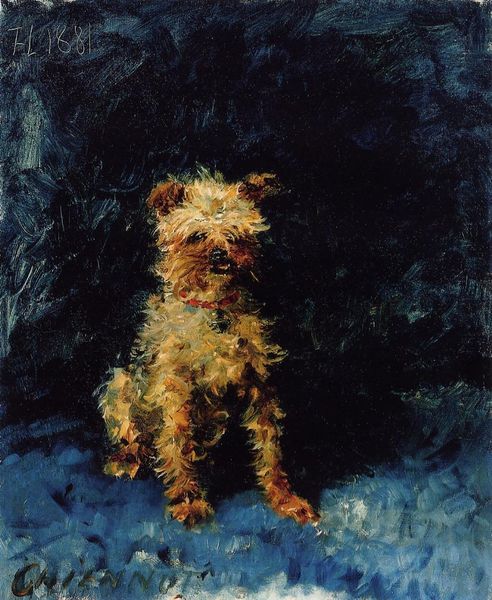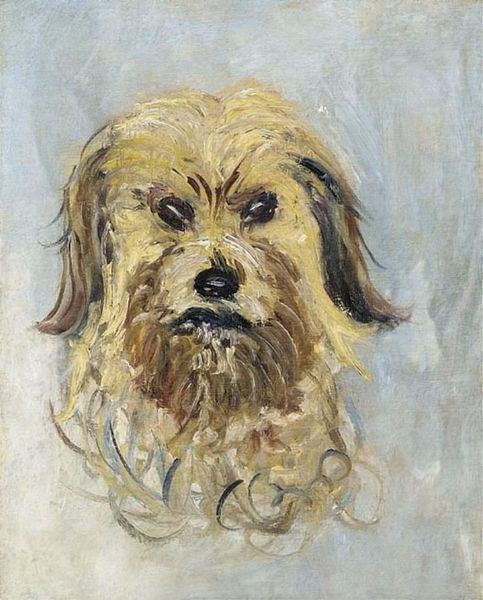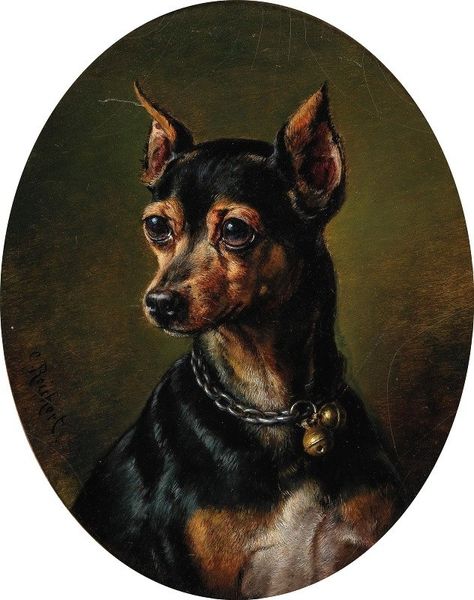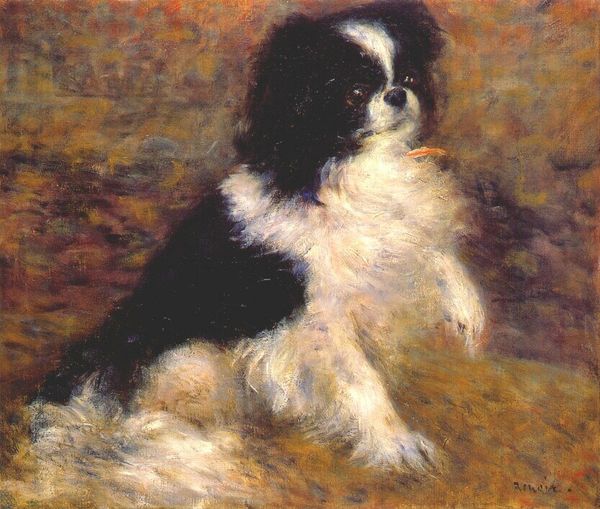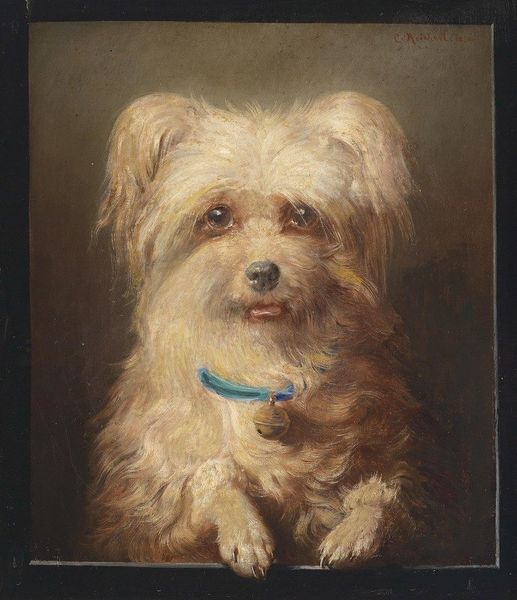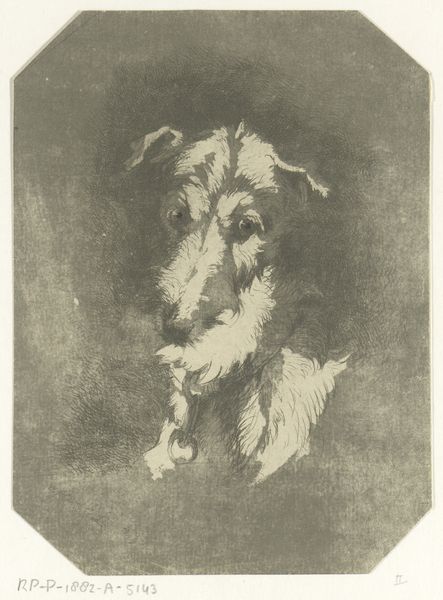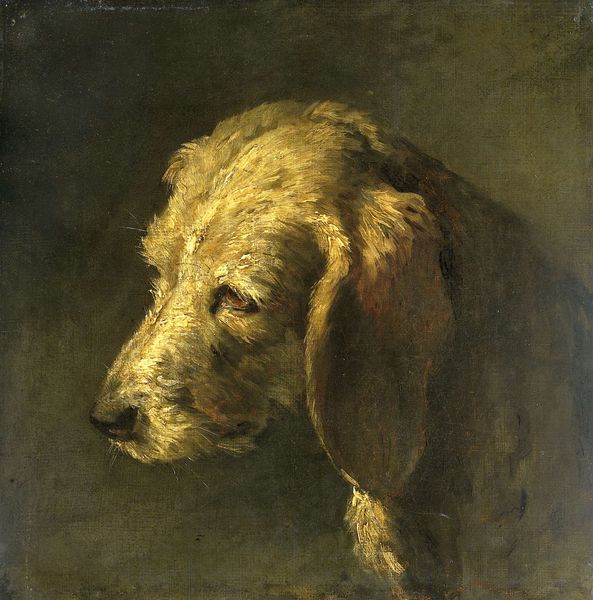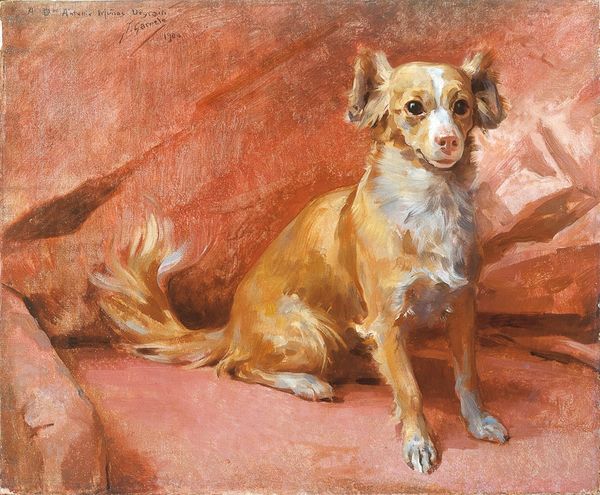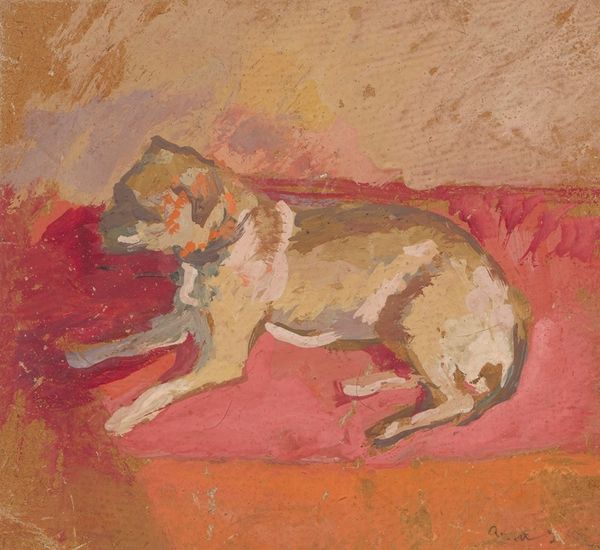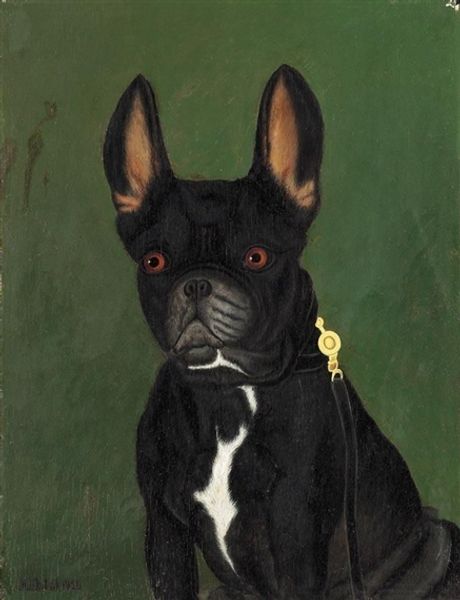
painting, oil-paint
#
portrait
#
painting
#
impressionism
#
oil-paint
#
dog
#
oil painting
#
portrait drawing
#
facial portrait
#
portrait art
#
fine art portrait
Copyright: Public domain
Editor: So, here we have Renoir’s "Head of a Dog," painted around 1870. It’s oil on canvas, and the more I look at it, the sadder this little dog seems. Those big, doleful eyes! What's your read on this one? Curator: Ah, yes, Renoir's pup. It’s tempting to anthropomorphize, isn't it? But I see something else entirely. Renoir, even in this seemingly simple portrait, is already grappling with light. Notice how it dances on the dog’s fur, hinting at warmth, texture? Editor: I can see that, but what about the pose? It’s very frontal, almost confrontational for a… dog. Curator: Perhaps! Or perhaps, it's Renoir pushing against the conventions of traditional portraiture. Less about regal composure, more about capturing a fleeting moment, an essence. The dog isn't trying to *be* anything. It simply *is*. Now, that bell… Does it ground the painting, remind us it’s an animal domesticated by people? Editor: I guess that bell hints at both the dog's belonging and maybe some sense of being bound to the will of someone else, if you stretch it a little bit... So even in what looks like a quick sketch, there’s a ton going on. Curator: Exactly! Isn’t it lovely how a simple head of a dog, rendered with such apparent ease, can still offer so much to ponder? It’s as much about Renoir’s burgeoning style as it is about this particular, nameless dog. Editor: That really changes how I see it, stepping away from assuming the dog is just "sad." Thanks for opening my eyes!
Comments
No comments
Be the first to comment and join the conversation on the ultimate creative platform.
